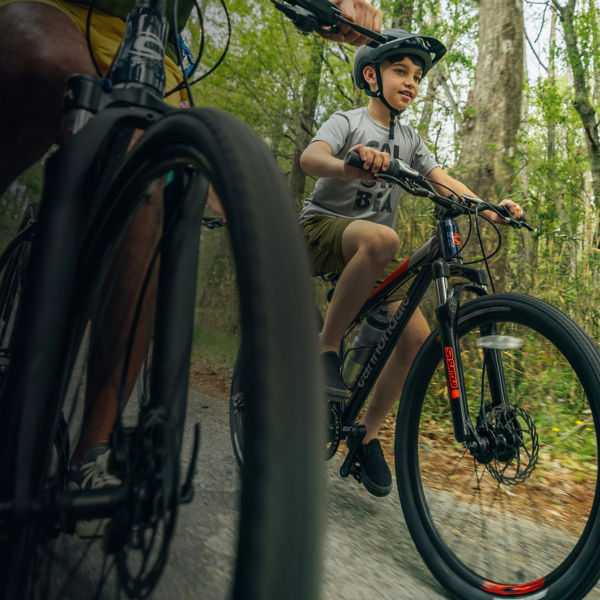
Electric bikes, or e-bikes, are a growing category of bikes that use built-in electric motors to add extra power to your pedaling (or, in some cases, propel the bike even if you’re not pedaling). Thanks to their added boost, e-bikes make cycling available to more people, and they help riders to travel farther and arrive at their destinations without being covered in sweat.
The variety of models and features has only grown as e-bikes have become more popular. Here’s how to find the right bike for you.
Ask Yourself These Questions
Before you buy, consider your riding style and what you’ll need an e-bike to do.
What kinds of e-bikes are allowed in my area?
Different places have different rules and regulations governing e-bike use. Some places only allow a certain class of e-bike (more on that below), while others have banned them entirely. Be sure to check the regulations in your area, and for the specific trails or routes you plan to ride, before you purchase an e-bike.
How far do I ride?
Consider how far you typically ride or plan to ride on your new bike. Make sure that you choose an e-bike that has enough range to last as far as you want to ride. Conversely, don’t waste money on a bike with extended range if you know you’ll never use it.
What kind of riding will I do (or want to do)?
Buy an e-bike that matches. Recreational riders don’t need lots of cargo storage, while road riders will be frustrated by the heavy weight of a fat tire e-bike.
Where will I store my e-bike?
Because of the added motor, battery, and electrical components, e-bikes are generally heavier than regular bicycles. Before you buy, think about where you’ll store your new set of wheels. Make sure you can lift or carry your bike if you’ll need to store it upstairs. If you'll be storing it in a garage or outside, look for models with removable batteries, which will make it easy to charge your bike and also add a layer of security (you should also invest in a good bike lock or two).
How fast do I need to go?
The fastest e-bikes (Class 3 models, see below) can travel up to 28 mph, which can be helpful for keeping up with traffic. But if you mostly ride in bike lanes or on bike trails, you may not need that extra speed.
What is my budget?
E-bikes can be expensive. Know what features are important to you (long range or carrying capacity, for example) and what you’re willing to compromise on. That way, you can get the bike you want and one you can afford.
E-Bike Classifications
Electric bikes come in three main classifications. These classifications are based on how an e-bike applies electric pedaling assist and how fast it can go.
Class 1: These electric bikes are pedal-assist, meaning the electric boost aids you only while you’re actually pedaling the bike. The assisted speed tops out at 20 mph.
Class 2: These e-bikes also top out at 20 mph, but rather than being pedal-assist only, they have a throttle that can propel the bike even if you aren’t pedaling, similar to a moped.
Class 3: These bikes are pedal-assist only, like Class 1 bikes, but they can reach assisted speeds up to 28 mph.




















